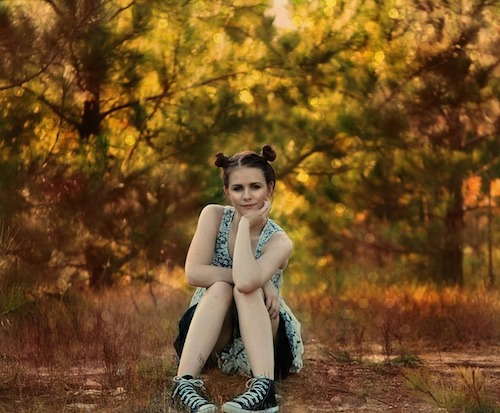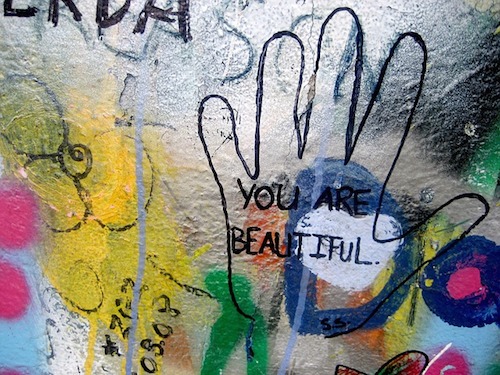I’ve hovered around a size eight for most of my life.
Being a size eight was medium, average. It was neither large nor small; it felt unremarkable.
As a teenager, I waffled between a junior’s size nine and 11, firmly planting myself in the latter during the period in late early high school years, where my after-school snacks consisted of a large box of the world’s most perfectly crispy fries from a nearby diner or a large Peanut Butter Moo’d shake from Jamba Juice.
This period coincided with my brief experience being a latchkey kid while my typically stay-at-home mom was taking some afternoon classes at the community college.
This left me with a sense of independence, a pantry full of goodies and little to no self-control.
I have strong memories of this being the pivotal turning point in which I began to realize that there were consequences to my decisions, that my food choices would actually affect my body in a way that preteen metabolism had previously deemed a moot point.
It was also the beginning of my personal struggle with negative body image issues.
Flash-forward to college.
I chose to attend a school called Hampshire College, known for its alternative approach to education, which means self-designed concentrations instead of pre-determined majors. I was excited by the idea that I could explore only subjects that I found inherently interesting.
I enjoyed vacillating between a myriad of subjects. While I ultimately settled on a concentration in Studio Arts and Psychology, I also found time to explore studies in critical theory, theatre, creative writing and art history. Across this wide variety of subjects, I noticed a common theme surfacing when it came time to deciding on research topics regardless of the specific class:
I was fascinated by studies of women’s relationship with their bodies.
In my Introduction to Visual Culture class, I wrote a final paper on the use of the female body as a prop in advertising.
For my final project for a class about Literature Psychoanalysis, I took a creative approach to my final term paper,
choosing to write my own version of the classic Snow White fairy tale with an emphasis on Snow White’s self-conscious view of her own beauty.
My senior thesis project was a very personal project, exploring my relationship with my own body and my own views of beauty with a drawing series and a deeply introspective blog documenting the process of creating and executing the project.
This subject of women’s relationships with their bodies (and the ways in which our culture affects these relationships) is very near and dear to my heart. One question, to which I found myself returning frequently, was simple: Where and at what age does a woman become truly aware of her relationship with her body?
This simple question gives way to many more complex quandaries.
What is the origin story of detaching from the body, beginning to see it as a vessel of one’s self-worth? How old is a girl when she starts thinking of her body in a negative way? What are the biggest influences in forming these beliefs?
When comparing notes with my friends and reading books on the subject, it seems the pivotal turning point happens as pre-teen gives way to true teen—the middle school years.
When I think back to my own middle school years, I had all the makings of a self-hate disaster.
Playing soccer in seventh and eighth grade while combating my chronic eczema left me with large open wounds on both shins—as soon as those plastic shin guards came off, I’d scratch my itchy, sweaty post-game legs till they bled, unable to stop myself.
Still, I had no problem wearing shorts and skirts, unflinchingly exposing scarred and scabbed legs while fielding lots of quizzical looks and questions from my peers who didn’t understand my condition.
Strike one.
I had an explosive growth spurt in sixth grade, catapulting me above the heads of my classmates, male and female alike, as I gazed down at them from a lofty five feet seven inches.
I still have vivid memories of the dance unit in P.E. which saw me partnered in ballroom dance class with boys whose heads didn’t even reach past my chest. When it came time to spin me, many would simply drop my hand, leaving me on my own to twirl as I ducked my head out of habit. One simply jumped in the air as I began to spin, an earnest yet embarrassing (for both of us) attempt to keep holding my hand while he spun his lamppost of a partner.
Strike two.
To top it all off, I got my period when I was only ten. This lead to a series of issues, including a particularly memorable early episode of menstrual cramps at a school dance when I was 12 which left me stuck in the bathroom in horrible pain for most of the night, confused at why this stomach ache wouldn’t go away, while my friends danced on without me.
Strike three.
It’s no wonder many girls begin a traumatizing relationship with their bodies during these formative years. There’s no shortage of difficult changes to the body, which we as a society tend to treat as the pink elephant in the room. If pre-teens feel awkward or uncomfortable with these messy and complicated changes to their body, it’s easy for this isolation to fester, planting the seed which will later blossom into full-blown negative body image and self-conscious insecurities.
It is my belief that the lack of honest dialogue between adults and pre-teens about changes in the body leaves children ill-equipped to understand their own changing bodies and unsure of how to support their friends and peers, often accidentally making it worse with attempts to ignore these changes.
From my memory, I had a relatively healthy relationship with my body during these years despite the cards stacked against me. Still, to this day, it surprises me that I felt comfortable showing off my legs while recovering from my severe eczema attacks—a little bit of self-love made all the more inspiring and heart-breaking because at that time I didn’t even consider that it was making any kind of statement. I just wanted to wear skirts.
When I think of the painful loss of innocence, this is often what I come back to.
There comes a time when a child’s ability to live her life unencumbered by society’s expectations of beauty and her naive form of self-love are replaced by feelings of doubt—particularly when her body starts to be a large part of how she claims her self-worth.
I was blessed with an incredibly loving set of parents whom I credit with much of my personal delay in negative body image; however, many of my friends weren’t so lucky.
Talk to almost any women and she will tell you that middle school was a rough time.
So, how do we break that cycle? How do we ease the transition from child to adolescent, creating memories which are inspiring and not traumatizing?
We create more of a dialogue surrounding these transitions.
This is different than a lecture. My call to arms is about real, honest conversation. It requires a back and forth, sharing from personal experience and offering young girls a language as well as an outlet for conversations about their bodies’ changes.
This helps young girls remember that they are not alone, that every women before them has gone through this, too. It helps us lead by example, reclaiming our own bodies as a message to the next generation that self-love shouldn’t be a difficult practice, but a simple given.
It means not reprimanding ourselves too strongly if we find ourselves slipping from our physical ideals, shifting our self-worth off of our bodies and onto our minds—onto our ability to be in loving relationship with those around us as well as ourselves.
It means creating opportunities for the young to express their fears and emotions instead of hiding them, fearing that maybe they are the only one struggling with these universal issues.
Not sure where to start?
Understandably, this is a very overwhelming topic to tackle.
The key is to first educate yourself.
Whether or not you are a parent of a young girl, everyone will come into contact with our next generation of women. It is important that we all lead by example and feel comfortable entering into these conversations with girls.
We need to be a resource.
We need to take responsibility for improving the dialogue between young girls confused by the changes their body is going through, and the adults who can empathize with the struggle.
Here are some great resources to get you started:
Websites.
The Facts. A sobering look at the statistics associated with the beginning of girls’ negative body image issues and the potential repercussions of leaving them unresolved.
For the Parents. Teens, Body Image and Self-Esteem: 5 Tips for Parents.
Informing the Dialogue. A great overview of the issue and some suggestions of topics to include in discussion with the young girls in your life.
Body Dysmorphic Disorder. A look at Body Dysmorphic Disorder (BDD), the technical term describing the extreme version of negative body image.
Books.
You’d be So Pretty If… by Dara Chadwick. A must-read for the mothers, this book explores the role the mother’s relationship with her own body plays in implicitly teaching her daughter about body image. The end of each chapter includes a “body image builder,” specific ways in which mothers can help their daughters.
Bodies by Susie Orbach. This short but powerful book, written by a psychotherapist, explores the reasons for which we are driven to alter our bodies across cultures and genders, relying on case studies from her own clinical practice as well as a variety of outside research in fields such as neuropsychology. Whereas our bodies used to make things, we now make our bodies. Orbach dissects the origin of this belief, explores the severity of the crisis, and offers suggestions towards healing and acceptance.
Wasted by Marya Hornbacher. To this day, Wasted is the most heartbreaking, touching memoir I’ve ever read. It’s a must read for anyone interested in better understanding the intricacies of eating disorders such as Anorexia and Bulimia and the complicated recovery process.
Relephant:
I see You, Beautiful.
~
Author: Mara Savina Falstein
Apprentice Editor: Brandie Smith/Editor: Toby Israel
Photos: Greyerbaby/pixabay, PublicDomainPictures/pixabay
~













Read 3 comments and reply